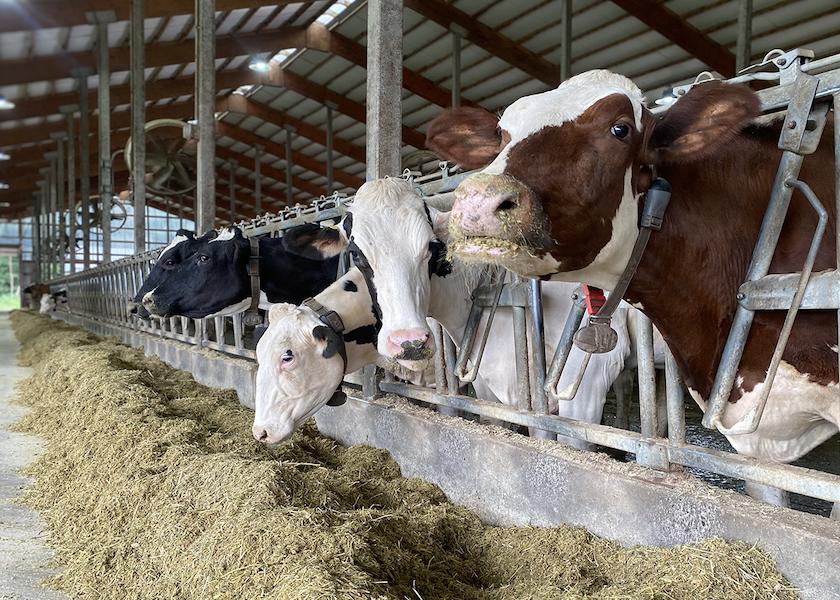Make the Most of Milk Check by Maximizing Components

Small changes in managing and feeding cows can make a big impact in a dairy’s milk check. Feed quality and timing, stocking density and feeding supplements are some areas that can impact component levels in milk and deliver a better return on a dairy’s feed investment.
Thomas Overton, Ph.D., professor and chair of the Animal Science Department and director of the PRO-DAIRY Program at Cornell University, highlighted how component prices impact the milk check. He shared key factors driving milk fat and protein levels in the bulk tank in the April 19 episode of PDPW’s The Dairy Signal™.
“With the price of commodities being really high these days, it’s easy to be cost-centric. But we also have to remember that milk price and the value of milk components is high and projected to remain high, so we still need to keep our eye on the return on investment for our feeding program,” said Dr. Overton.
Dr. Overton noted that over the past 20 years or more most of a producer’s milk check has been driven by dollars per pound of milk fat as well as protein. The value of protein peaked in 2014, and consumer demand for butter and other items has driven an increase in value of milk fat in recent years. Projections show continued strong pricing for components through 2022 and into 2023.
A number of factors impact the levels of milk fat in milk, including non-nutritional factors such as genetics, stage of lactation and seasonality.
“There is definitely a seasonal pattern for milk fat percentage,” said Dr. Overton, noting the pattern is consistent across all U.S. milk-production regions. “We see about a three-point swing from January to when it bottoms out in June and July, then bounces back in the fall.”
Dr. Overton reviewed several dietary components that can reduce milk fat in milk, including the supply and availability of linoleic acid in the diet. Forage and ration factors contributing to low milk fat include wet corn silages, starch availability in corn silage, high mold or yeast counts in silage, mycotoxins and particle size of the total mixed ration.
“The good thing is that if a herd has low milk fat and you make the right change, you will see the response in the bulk tank in 10 days to two weeks like clockwork,” he said. “That’s because it takes 10 days to two weeks for the rumen to turn over from a microbial standpoint.”
A number of other feeding management and environmental factors can impact how the rumen functions, such as feed mixing, dry matter changes, feeding frequency, heat stress and more. Studies have shown when stocking densities are too high, de-novo fat synthesis decreases, which negatively influences the rumen.
“Protein synthesis is energy-driven. You have to have the amino acids, but you also have to have the energetic signals to the cow to make components,” he said.
For more details, watch or download the full episode of "Fatten up the milk check." In it, Overton highlights data from studies and further discusses the primary sources of milk fat, the influence of amino acids lysine and methionine, the importance of the rumen’s microbial environment and the availability of new analytical tools.
All episodes of The Dairy Signal, including audio and video downloads are archived here. Watch The Dairy Signal™ at 12:00-1:00 P.M. CT each Tuesday, Wednesday and Thursday.
About PDPW
Professional Dairy Producers® (PDPW) is the nation's largest dairy producer-led organization of its kind, focusing on producer professionalism, stakeholder engagement and unified outreach to share ideas, solutions, resources and experiences that help dairy producers succeed.







